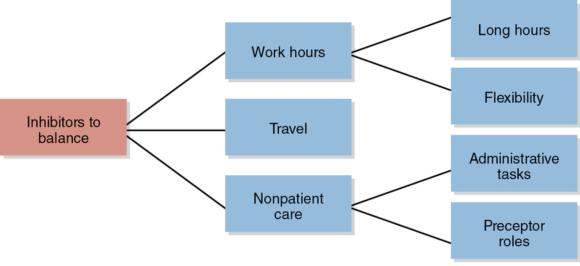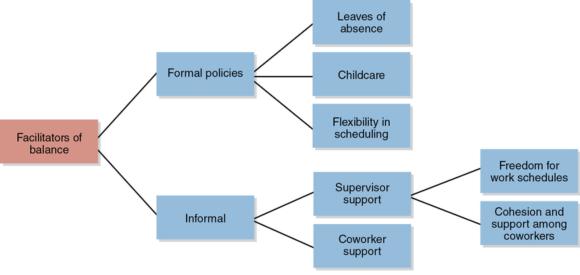Work-life balance for athletic trainers
This is an excerpt from Management Strategies in Athletic Training 5th Edition by Jeff G Konin,Richard Ray.
Work - life balance is a theory that focuses on blending and prioritizing a person's work responsibilities and lifestyle (e.g., leisure, health, family, social needs). The concept focuses on the recognition that people assume multiple roles within these two areas, and thus the demands of one may affect the others (Kalliath and Brough 2008). Work - life balance is a multilevel construct, and because the athletic training work environment makes many demands on a person's time and energy, concerns have emerged within the profession (Kossek, Baltes, and Matthews 2011; Kossek et al. 2014). These demands associated with working as an athletic trainer can make it difficult to find balance, creating a work - life conflict, and have led to concerns about professional commitment and a career that is viewed as transitory rather than steadfast.
Defining Balance
Two perspectives exist regarding a person's ability to achieve balance. Work - life conflict takes the view that work and life are incompatible, and conflict results. Conversely, the idea of work - life enrichment assumes that harmony can exist despite engaging in multiple roles. The first perspective centers on the idea that conflict is inventible because the requirements of multiple roles create competition for time, energy, and resources. These demands lead to the inability to meet all expectations (Goode 1960).Conflict, therefore, has an adverse effect on overall work performance and a person's health because it spills over into each role. Although conflict is suggested to affect work and lifestyle roles equally (Greenhaus and Beutell 1985), often family and personal time is most affected or even sacrificed because it is viewed as less flexible. The emphasis of work - life conflict is on the negative effects that filling multiple roles can have on work, home, and personal life.The second mindset, work - life enrichment, offers a more positive outlook: When engaging in multiple roles, people gain strength from each role they participate in, enhancing rather than depleting resources (Greenhaus and Powell 2006). Proponents of the idea of work - life enrichment believe that work and family roles are interdependent, and that they work together to promote positive relationships. When one experiences work - life enrichment, development of skills and knowledge in one role can increase performance and success in the other roles.
Barriers to Balance
Specific variables create conflict between work life and family and home life for athletic trainers, and these variables can be classified into three broad areas: individual (i.e., personality), organizational (i.e., the nature of the job), and sociocultural (i.e., gender stereotypes) (Dixon and Bruening 2007). Organizational variables have been the primary focus of research, and factors leading to conflict include long working hours, travel, and limited control over one's work schedule (Mazerolle, Bruening, and Casa 2008; Mazerolle et al. 2011). For people working in sport settings and health care systems, including athletic trainers, the concept of facetime is important (Dixon and Bruening 2007). The need to be present to complete all work-related tasks is a requirement and job expectation that can limit time for other activities as well as create an emotional and physical strain on the individual. Although the employment setting can influence the structure and length of the workday, most athletic trainers work more than 40 hours per week (Mazerolle, Bruening, and Casa 2008; Mazerolle et al. 2011), and that is the most frequently cited source of conflict. Concerns with salary, supervisor support, and lack of adequate staffing also impose barriers to work - life balance. Figure 4.17 illustrates the factors described as inhibitors to finding balance in athletic training.

Factors that inhibit finding balance in athletic training.
Facilitators to Finding Balance
Concerns about work - life balance are not isolated to athletic trainers; considerable attention has been given by researchers, professional organizations, and government agencies to developing and finding work - life balance strategies and policies.Much like the barriers to balance, facilitators are viewed from an organizational, sociocultural, and individualized level (figure 4.18).

Facilitators to work - life balance.
Workplace Initiatives
Workplace initiatives to establish work - life balance can be formal or informal (Kossek, Lewis, and Hammer 2010). The human resources department of an organization establishes formal workplace initiatives. Formal policies are often referred to as organizational or structural support for work - life balance and are designed to provide employees some control over their work schedule as well as enable them to combine employment with caregiving. Common examples include flexible work arrangements, dependent care initiatives, vacation time, sick and personal leave, and childcare and eldercare benefits. Informal initiatives can be defined as cultural work - life support. They are socially based within the organization and help create a climate that supports work - life balance. Cultural support takes place during interactions between the AT and her supervisor and between the AT and her coworkers. Despite the informality, cultural support is as critical as formal workplace initiatives to supporting work - life balance and creating a climate that promotes a positive view of this balance (Kossek and Hammer 2008; Hammer et al. 2009).
- Flexible work arrangements (Kossek and Lautsch 2008) allow employees to establish their own work schedules (e.g., work from 10 a.m. to 6 p.m. instead of 8 a.m. to 4 p.m.); these flexible work schedules can be classified as compressed (i.e., 10-hour days, over four days), split shifts, or part-time (through job sharing). The flexible work arrangements allow employees more freedom to organize their work so it fits with other aspects of their life. Flexible work arrangements increase employees' control over their work time and their ability to make decisions about their workday.
- Mobile workplace is an arrangement in which an employee works remotely, often from home, but it can be anyplace outside the office. This arrangement allows employees flexibility in how they perform their job. Tasks such as documentation and preparing bids for ordering supplies can often be done from any location with a secure Internet connection.
- Dependent care initiatives provide employees support to help them manage their family responsibilities more easily. Common initiatives are on-site dependent care, financial assistance toward dependent care, and allowing an employee the flexibility to take personal days instead of vacation days to deal with appointments and unexpected dependent care issues.
- Leave of absence refers to time allowed away from work because of an unusual circumstance, such as jury duty, a death, or the birth or adoption of a child. During this time away, employees receive their normal compensation for a predetermined period of time. Common leaves of absence include maternity and paternity leave and bereavement leave.
- Employee assistance programs (EAPs) are on-site workplace programs that assist and support an employee who may need short-term counseling. The programs are confidential and voluntary, and provide employees an outlet for services related to personal and work problems that may be influencing their lives. EAPs address a broad spectrum of issues, and consultants provide the service.
- Health care initiatives, or wellness programs, aim to improve an employee's quality of life through initiatives such as fitness programs, healthy lunch options, stress relief workshops, and discounts on prescriptions. By encouraging employees to invest in their health through measures such as annual checkups, these initiatives can lower employees' medical costs.
Learn more about Management Strategies in Athletic Training, Fifth Edition.
More Excerpts From Management Strategies in Athletic Training 5th EditionSHOP

Get the latest insights with regular newsletters, plus periodic product information and special insider offers.
JOIN NOW


